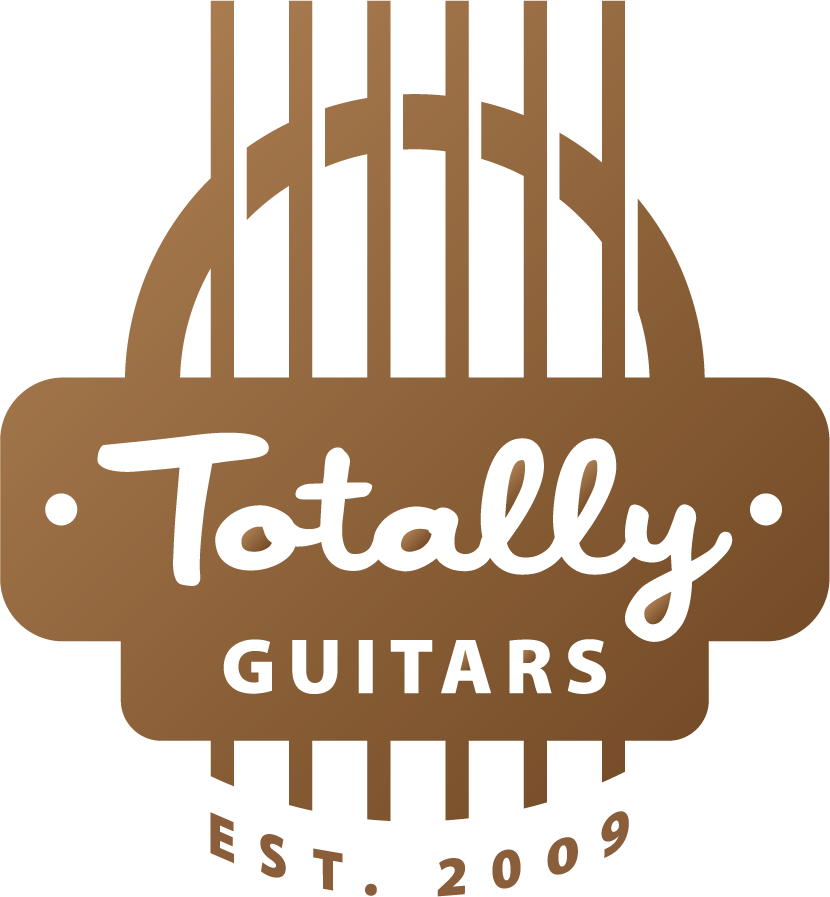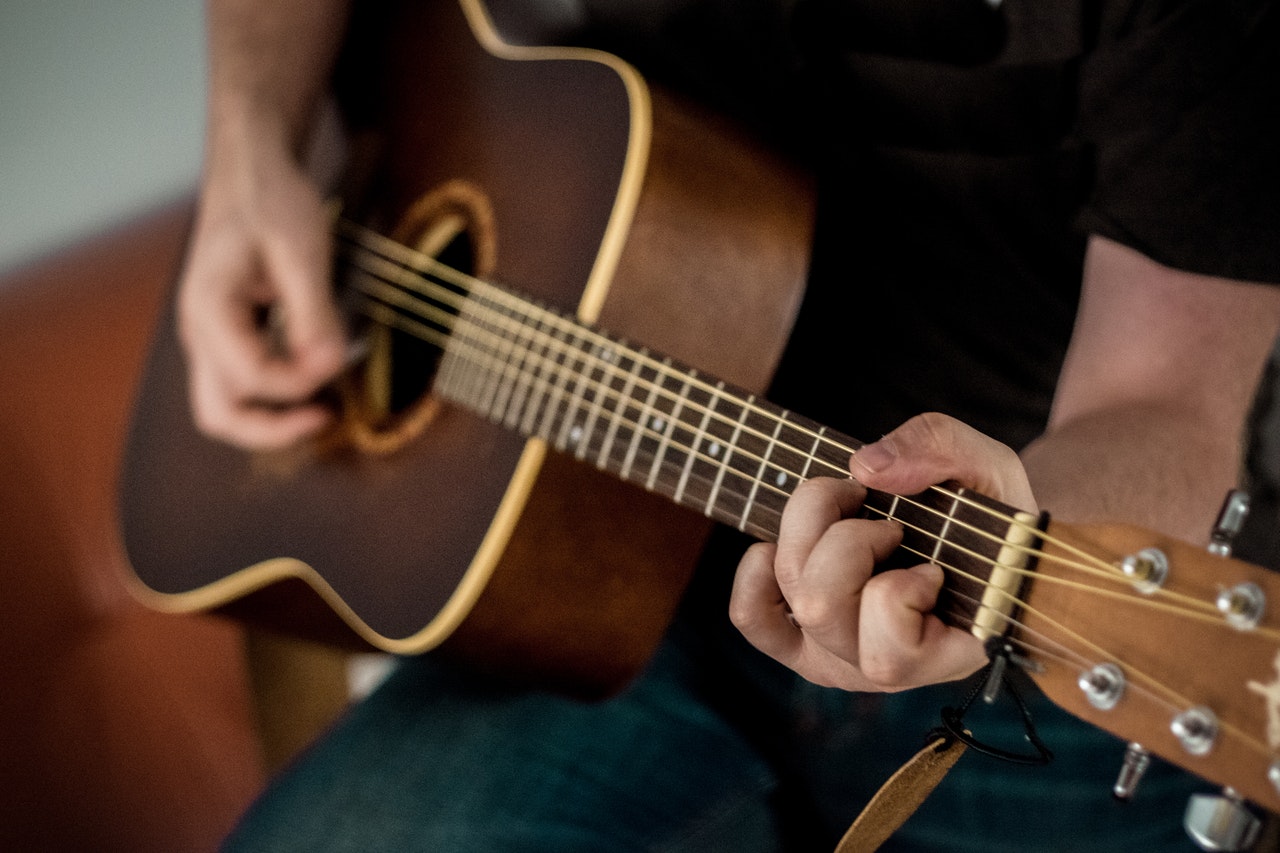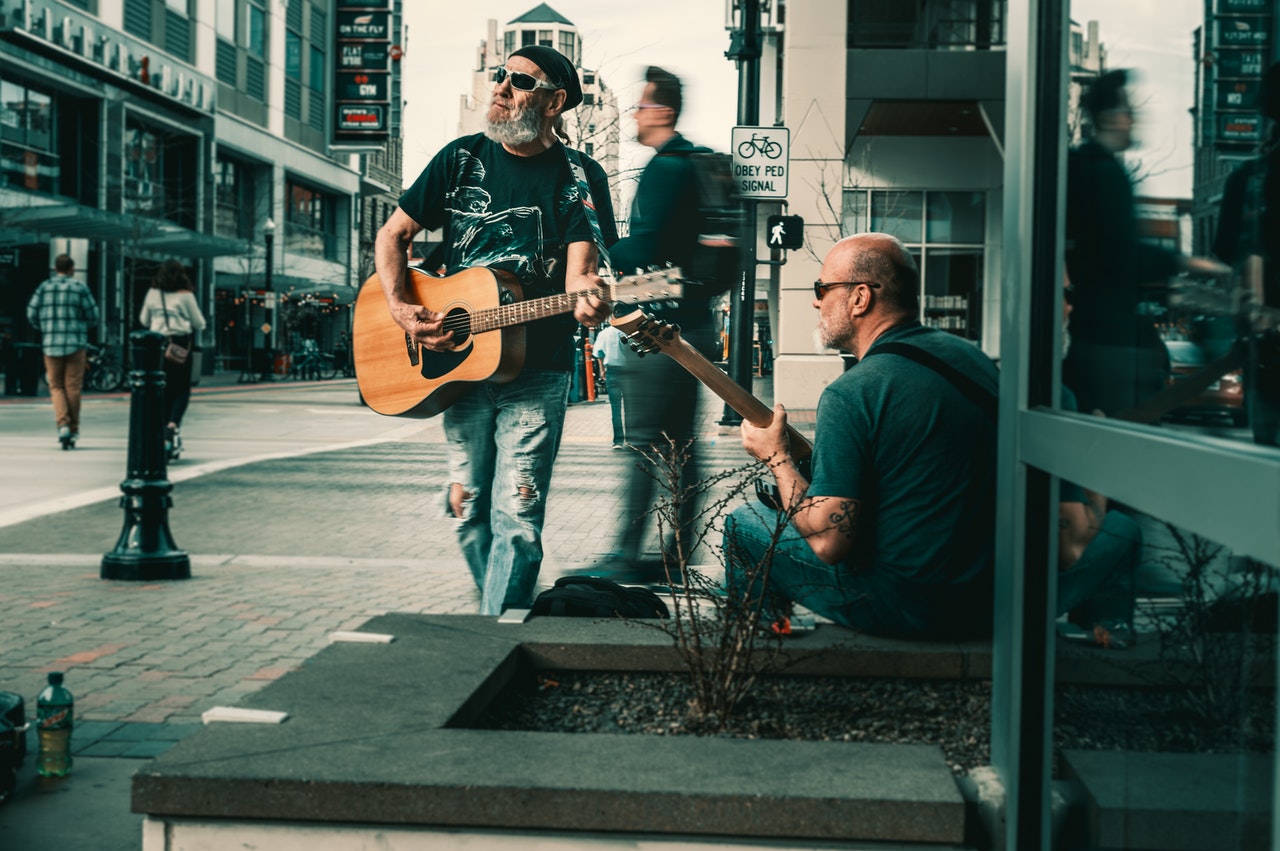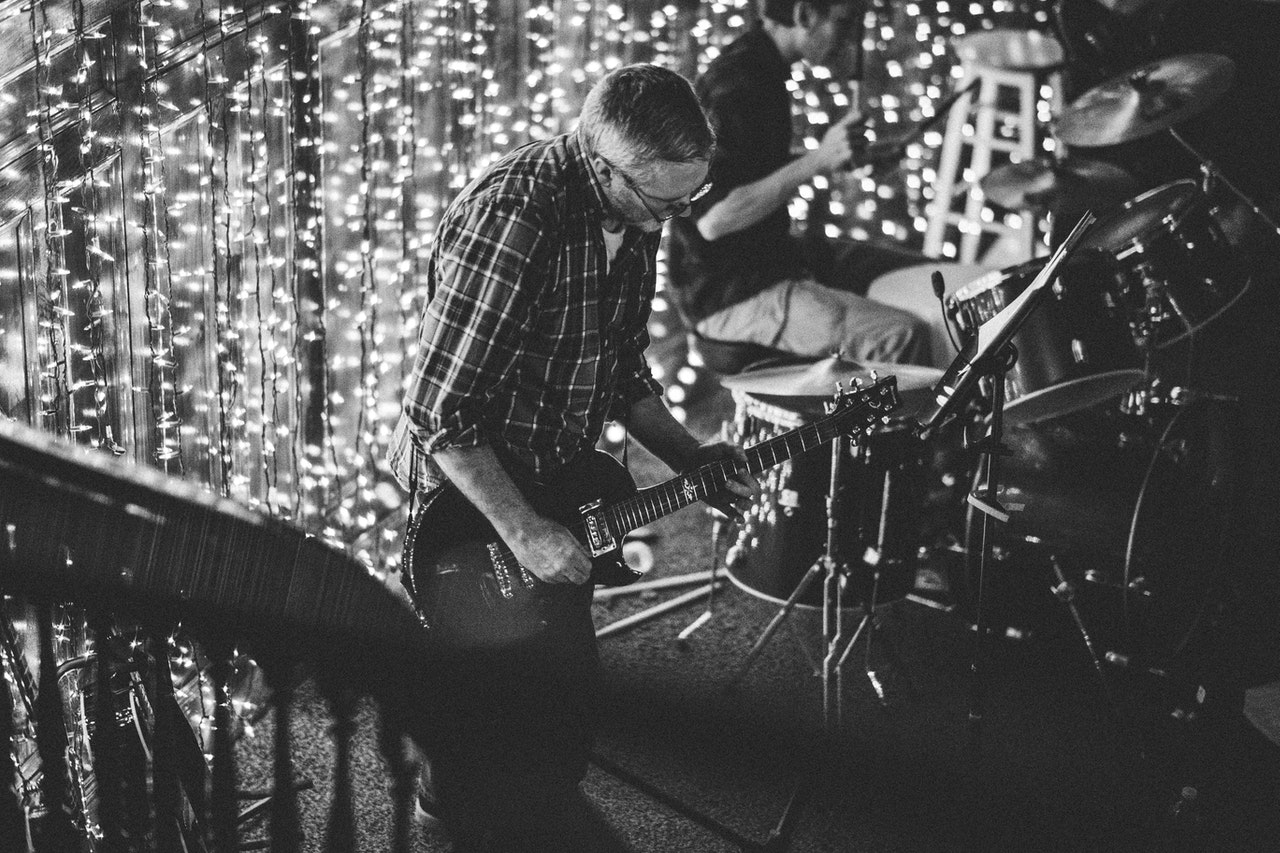Nick Drake
Share

By: Stephen Rose

Nick Drake was part of the British folk revival movement of the late 60’s, which included Fairport Convention, Pentangle, and The Incredible String Band. He died in 1974 from an accidental overdose of anti-depressants after releasing three albums which failed to find an audience – then became an icon nearly thirty years later sparked in part by Volkswagen licensing one of his songs for a television commercial.
Over the years since his death Nick Drake’s fan base and album sales have steadily risen. Fellow musicians have cited him as an influence and covered his compositions; corporations have licensed his songs for television commercials; and movies have used his music in their soundtracks. In 2003, Rolling Stone included two of his albums in their list of 500 greatest albums of all time. Then in 2004, Drake’s resurrection culminated when two singles charted from his Made To Love Magic compilation.
Nick Drake was born in 1948 in Rangoon, Burma, where his father worked as an engineer for the Bombay Burma Trading Company. His mother was the daughter of a senior member of the Indian Civil Service. The family moved back to England in 1952 and resided near the district of Stratford-upon-Avon, in Warwickshire county (the birthplace of William Shakespeare and George Eliot).
Both of his parent’s were musically inclined and wrote their own songs. With his mother’s encouragement Nick learned piano at an early age and began recording his nascent compositions on the family’s reel-to-reel tape recorder. [Recordings of Molly Drake’s songs, which have surfaced in recent years, are remarkably similar in tone and outlook to the later work of her son. They share a fragile vocal delivery, and their lyrics echo sentiments of foreboding and fatalism.]
 In 1962, Nick Drake attended Marlborough College where he played piano in the orchestra, and learned clarinet and saxophone. He also sang in the school choir, and was adept at sports (he became captain of the rugby team, and holds the school record in track & field for the 100-yard dash). Additionally, he was Head of House in C1, the college’s largest house.
In 1962, Nick Drake attended Marlborough College where he played piano in the orchestra, and learned clarinet and saxophone. He also sang in the school choir, and was adept at sports (he became captain of the rugby team, and holds the school record in track & field for the 100-yard dash). Additionally, he was Head of House in C1, the college’s largest house.
In 1964, Drake formed a band called The Perfumed Gardeners, which played jazz standards and old R&B tunes. They also covered records by The Yardbirds and Manfred Mann.
In 1965, influenced by the folk movement in Britain and America – and artists such as Bert Jansch, Bob Dylan, Jackson C. Frank, and Phil Ochs – he purchased his first acoustic guitar (possibly a Guild M-20) and began experimenting with open tunings and finger-picking techniques. Self-taught, Drake achieved his unique guitar style through the use of alternate tunings and clusters chords (chords comprising at least three adjacent tones in a scale). Difficult to play on a guitar using standard tuning, Drake employed alternate tunings which allowed him to achieve tone clusters while playing conventional chord shapes.
In 1966, Nick Drake won a scholarship to study English literature at Cambridge University. He delayed enrolling for six months to attend the University of Aix-Marseille, France, where he began practicing his guitar in earnest. During this time he developed a serious marijuana habit and possibly began experimenting with LSD. Before returning to England he traveled with friends to Morocco where he had a chance encounter with The Rolling Stones.

The following year at Cambridge, Drake was introduced to Robert Kirby, a music student who recorded several of Nick’s compositions then wrote arrangements with strings and woodwind to perform at the university. [These recordings would later emerge on several posthumous compilations, including Made To Love Magic. Kirby also provided arrangements on Drake’s first two albums.]
While at Cambridge, Drake began playing in clubs and coffee houses around London. His big break came when he was included on a bill for a benefit concert headlined by Country Joe and the Fish at the Round House in London. He was discovered by Ashley Hutchings, bassist for Fairport Convention, and signed to a contract by producer Joe Boyd.
Ashley Hutchings: “Nick was performing there with a friend on guitar. I seem to recall that he was standing and the friend was sitting down. I’d never heard about him. I’d never heard any of his music. And the first thing that struck me was not the sound, not the music, but the image. I thought he looked like a star. He looked wonderful. Very tall. He seemed to be seven foot tall. And that very rare commodity, charisma was shining through clearly. That made me want to get a bit closer and so I did. I edged closer and closer to the stage. And as I got closer and closer I started to take in everything else. What a good guitarist he was, his picking. Then the songs, the musical style of the songs which was quite unusual. By then his very short set was coming to an end. I think it must have only been four or five songs perhaps. As soon as he came off stage I made a beeline for him and started to talk to him; introduced myself and said I thought his music was wonderful and could I have a phone number? I went away and immediately contacted Joe Boyd.”
When Boyd called to ask for a tape, Nick was thrilled. Boyd, then in his twenties, was already a local legend. He had come to England straight from Harvard to set up a record company called Witchseason Productions. He took a great personal interest in his artists, nourishing their egos, unraveling their crises, developing their music. When he heard Nick’s tape, he was amazed at the quality. He played it several times, not trusting his first reaction. Boyd gave the 20-year-old a contract and, in 1968, produced Five Leaves Left.
Joe Boyd: “So I called him and he came in. And in those days you didn’t have cassettes; he brought a reel-to-reel tape that he’d done at home. Half way through the first song I felt this was pretty special and I called him up and he came back in and he talked and I just said, ‘I’d like to make a record.’ He stammered, ‘Oh, well, ok.’ Nick was a man of few words; he seemed pleased in his own diffident way and we started talking about where to begin.”
[Joe Boyd was an American sent to Britain in 1965 to establish an overseas office for Elektra Records. He had previously organized European tours for Muddy Waters, Coleman Hawkins, Stan Getz, and Sister Rosetta Tharpe. He was also responsible for the sound at the 1965 Newport Folk Festival – memorable for Bob Dylan’s amplified rock set. In 1966, he opened London’s first psychedelic ballroom, the UFO Club, and produced recordings by UFO regulars Pink Floyd and The Soft Machine. Other British acts Boyd worked with include Eric Clapton and the Powerhouse, The Incredible String Band, Fairport Convention, Richard Thompson, Sandy Denny, John Martyn, and Vashti Bunyan.]
 In September 1969, Nick Drake’s debut album, Five Leaves Left, was released. Beautifully produced by Joe Boyd and engineered by John Wood, the album featured guitarist Richard Thompson (Fairport Convention), and bassist Danny Thompson (Pentangle). Robert Kirby provided string arrangements for several tracks including “Way To Blue,” “Day Is Done,” and “Fruit Tree.”
In September 1969, Nick Drake’s debut album, Five Leaves Left, was released. Beautifully produced by Joe Boyd and engineered by John Wood, the album featured guitarist Richard Thompson (Fairport Convention), and bassist Danny Thompson (Pentangle). Robert Kirby provided string arrangements for several tracks including “Way To Blue,” “Day Is Done,” and “Fruit Tree.”Highlights include the country-tinged opening track “Time Has Told Me” (with Richard Thompson on lead guitar, and Paul Harris on piano); “River Man” (noted for its 5/4 time); “Cello Song” (featuring Clare Lowther on cello, and Rocki Dzidzornu on congas); and the jazzy closing track “Saturday Sun” (with Tristan Fry on vibraphone). Other standouts are “Three Hours,” “Man In A Shed,” and “The Thoughts Of Mary Jane.”
[The album’s title was a reference to printed notes inserted towards the end of packets of Rizla cigarette papers indicating “Only five leaves left.”]
In October 1969, Nick Drake opened for Fairport Convention when they played their famous Liege and Lief concert at the Royal Festival Hall in London. Although his performance was a relative success, poor audience response at other shows led Drake to gradually withdraw from live performing.
Brian Cullman remembers opening for Nick Drake at Cousins, a dark underground club on Greek Street in London: “His shyness and awkwardness were almost transcendent. A tall man (he stood over 6’3″), his clothes – black corduroy jacket and pants, frayed white shirt – hung around him like bedclothes after a particularly bad night’s sleep. He sat on a small stool, hunched tight over a tiny Guild guitar, beginning songs and, halfway through, forgetting where he was and stumbling back to the start of that song, or beginning an entirely different song which he would then abandon mid-way through if he remembered the remainder of the first. He sang away from the microphone, mumbled, and whispered, all with a sense of precariousness and doom. It was like being at the bedside of a dying young man who wants to tell you a secret, but who keeps changing his mind at the last minute: Come closer; no, on second thought, go away.”
Certain of his abilities and desperate to create momentum for his fledgling career Nick Drake dropped out of Cambridge with only nine months left before graduation and moved to London to pursue music full-time and begin work on his follow-up album.
His father tried to change his mind: “I wrote him a long letter about the safety of staying in Cambridge,” Rodney Drake recalled. “He said the safety of it was the one thing he didn’t want.”
 In November 1970, Nick Drake released his sophomore effort, Bryter Layter. Once again expertly crafted by Joe Boyd and John Wood, the album featured guitarist Richard Thompson, and arrangements by Robert Kirby. In an attempt to achieve commercial success, Drake utilized the Fairport Convention rhythm section of Dave Pegg (bass) and Dave Mattacks (drums). He also included three instrumentals as a way to replicate the style of the Beach Boys’ masterpiece Pet Sounds.
In November 1970, Nick Drake released his sophomore effort, Bryter Layter. Once again expertly crafted by Joe Boyd and John Wood, the album featured guitarist Richard Thompson, and arrangements by Robert Kirby. In an attempt to achieve commercial success, Drake utilized the Fairport Convention rhythm section of Dave Pegg (bass) and Dave Mattacks (drums). He also included three instrumentals as a way to replicate the style of the Beach Boys’ masterpiece Pet Sounds.Highlights include “Hazey Jane II,” an upbeat tune featuring Kirby’s horn arrangement and Thompson’s lead guitar; the jazzy “Poor Boy,” featuring Ray Warleigh on alto sax; and “Northern Sky,” a collaboration with underground rock legend John Cale (The Velvet Underground) who played celeste, piano and organ. Other notable songs include “Hazey Jane I,” “At The Chime Of A City Clock,” and the instrumental “Bryter Layter.”
[The albums’ title was meant to be a little poke at BBC weather forecasters, who would often refer to the weather as “cloudy now, but brighter later.” Nick added the “y’s” for visual effect.]
The release of Bryter Layter coincided with the beginning of Drake’s gradual descent into frustration and despair. Despite receiving favorable reviews, sales of both albums were dismal – compounded by his refusal to support his records by performing in public or consenting to do interviews.
Shortly after the release, Joe Boyd sold his production company to Island Records, and moved to Los Angeles to work with Warner Brothers on film scores. The loss of this key mentor figure, coupled with the album’s poor sales, led the already introverted Drake to further withdraw from social contact, move back to his parent’s house, and retreat deeper into depression.
In 1971, Drake was persuaded by his family to visit a psychiatrist at St Thomas’s Hospital, London, where he was prescribed a course of antidepressants.
 In October 1971, Nick Drake contacted his audio engineer John Wood and made arrangements to begin work on Pink Moon, his third and final album. In order to find available studio time the album was recorded at midnight in two separate two-hour sessions over two days. Featuring only Drake’s vocals and guitar, most of the songs were recorded in just one take. The finished product had a sparse running time of just over 28 minutes.
In October 1971, Nick Drake contacted his audio engineer John Wood and made arrangements to begin work on Pink Moon, his third and final album. In order to find available studio time the album was recorded at midnight in two separate two-hour sessions over two days. Featuring only Drake’s vocals and guitar, most of the songs were recorded in just one take. The finished product had a sparse running time of just over 28 minutes.The stark nudity of the performance and bare honesty of his lyrics may have been Drake’s final attempt to step out from behind the veil of glossy studio productions and leave a final testament to who he was and what he stood for. The album’s brevity serves to increase its emotional impact. At the end of the second session, he told John Wood “That’s it. That’s all I’ve got.”
John Wood recalls, “He arrived at midnight and we started. It was done very quickly. After we had finished I asked him what I should keep, and he said all of it, which was a complete contrast to his former stance. He came in for another evening and that was it. It took hardly any time to mix, since it was only his voice and guitar, with one overdub only (piano on Pink Moon). Nick was adamant about what he wanted. He wanted it to be spare and stark, and he wanted it to be spontaneously recorded.”
Pink Moon contains some of Drake’s most personal and prophetic lyrics, suggesting he foresaw the inevitability of his impending departure. He was always particular about the ordering of the tracks on his albums. On this release in particular the sequence seems intended to convey an overall concept exploring life’s phases, lessons, and ultimate passing. Beginning with the ominous warning of the title track (“And none of you stand so tall. Pink moon gonna get ye all.“); followed by the reflections of “Place To Be” (“When I was young. Younger than before. I never saw the truth hanging from the door.“); to the unanswered questions of “Which Will” (“Which will you go for? Which will you love? Which will you choose from the stars above?“).
The album’s centerpiece summarizes life’s cruel indifference in “Things Behind The Sun” (“Please beware of them that stare. They’ll only smile to see you while your time away.“); followed by the pulsing rhythm of “Know” (“Know that I love you. Know I don’t care. Know that I see you. Know I’m not there.“); the critical self-appraisal of “Parasite” (“Take a look, you may see me on the ground. For I am the parasite of this town.“); to the desperate plea of “Free Ride” (“Hear Me Calling. Won’t you give me a free ride?“).
On the penultimate track “Harvest Breed,” Drake seemed resigned to his fate (“Falling fast and falling free this could just be the end. And you’re ready now for the harvest breed.“). The album concludes on an optimistic note with a hopeful message of renewal in “From The Morning” (“And now we rise and we are everywhere. And now we rise from the ground.“).
[The cover art for Pink Moon featured an illustration by Michael Trevithick, the partner of Drake’s sister Gabrielle.]
Pink Moon was released in February 1972, and sold even fewer copies than Nick Drake’s first two records. Shortly after its release he suffered a mental breakdown and checked himself into a psychiatric hospital for five weeks. The hospital prescribed antidepressants, then he returned home to live with his parents in Birmingham. Thereafter, he wrote little music and rarely ventured out.
John Martyn: “I went up to see him in Birmingham, he was living with his parents. He was walking around the garden and was really really withdrawn. He found it very difficult to speak. And I said, ‘Listen what the hell has gone wrong with you? What is wrong with you? Did you think you were going to be a star overnight?’ And he said, ‘Yes I did.’ And I said, ‘Well that’s the problem there, you’re not, just sit down, make some more music and you will be. Don’t worry, you’re beautiful, you’re great…’ And he just proceeded to enter into a tirade about the injustices of the world.”
Joe Boyd: “One day I was sitting in London sitting at home and the phone rang. And Nick was on the phone, a pay phone, and he was very agitated and he said, ‘I want to talk to you.’ And I said, ‘Fine come on over.’ And he came over and I let him in and he came upstairs and he looked terrible; you know, his hair was dirty and he was sort of unshaven and his finger nails were dirty and he was wearing a shabby coat. He wasn’t the sort of diffident quiet person that I had remembered. He was very agitated, very nervous, twitchy. He sat down and he immediately launched into the kind of tirade about his career, about money. And basically it was accusatory, he said, ‘You told me I’m great, but nobody knows me, nobody buys my records, I’m still living on handouts from the publishing company, I don’t understand. What’s wrong? Whose fault is this?’ And he was angry and I tried to explain that there’s no guarantees. That you can make a great record and sometimes it just doesn’t sell.”
In February 1974, Nick Drake returned to the studio and managed to put down four more tracks including “Rider on the Wheel,” “Hanging on a Star.” and “Black Eyed Dog.” [Winston Churchill popularized the phrase “the black dog is here” to describe his severe bouts of depression, taken from Samuel Johnson.]
Joe Boyd: “John Wood and I did the final recording session. He was so – in such a state that he couldn’t sing and play the guitar at the same time. Those last four tracks, Black Eyed Dog and all those, are recorded with guitar and then voice singing over the guitar. Because he was just too nervous, or too, I don’t know how to describe the way he was, but it was very, very agonizing seeing him try to do those recordings. I mean they are extraordinary recordings, but they were – the combination of the lyric and the music and the state of Nick at the time of doing it was a very distressing experience.”
Unable to continue with the session, Drake took several months off, then returned in July 1974 to record his final two tracks “Voices” and “Tow The Line.”
In the early hours of November 25, 1974, Drake’s parents heard him go downstairs to the kitchen, fix a bowl of cereal, then return to bed. Nick often slept late, but by noon his mother went upstairs to ask about breakfast. When she opened the door, she saw Nick lying dead across his bed.
Drake had been taking a very strong tricyclic antidepressant called Tryptizol, and he overdosed. An insomniac, Nick had used the drug as a sleeping pill. Molly Drake never suspected it was dangerous. “We used to be so careful about locking up every aspirin and every pill,” she says, “but we never thought about the medication he had from the doctor.”
The assistant coroner declared it a suicide, even though he left no note. The verdict was disputed by his friends and family. Nick Drake was 26 years old.
Gabrielle Drake: “I don’t believe that anyone commits suicide who doesn’t actually want to somewhere very, very deep inside them. Nevertheless I also think that he took those drugs on the spur of the moment. He didn’t leave a note or anything like that; it was not premeditated and I think that he sort of thought, ‘Well, either I’ll die or I’ll come through this differently.’ Or a different person or something. That’s what I feel.”
In February 1979, the BBC broadcast the documentary “A Stranger Among Us: Searching For Nick Drake.”
In 1979, Island Records released the Fruit Tree retrospective, which included all three albums plus four tracks recorded with John Wood in 1974. However, sales were poor and the album received little press notice, and in 1983 Island deleted Fruit Tree from its catalogue.
 In 1985, Dream Academy dedicated their hit song “Life In A Northern Town” to Nick Drake.
In 1985, Dream Academy dedicated their hit song “Life In A Northern Town” to Nick Drake.In 1986, Gorm Henrik Rasmussen, a Danish poet, wrote the first biography of Nick Drake, entitled “Pink Moon – A Story About Nick Drake.” It includes exclusive interviews with the singer’s parents, Rodney and Molly Drake.
In 1994, Island Records released the compilation “Way to Blue: An Introduction to Nick Drake.” Although the album never charted in the UK, it sold consistently over the next few years, gaining a gold disc certification in September 1999 for sales of 100,000 copies in the UK.
In 1998, BBC Radio 2 broadcast a documentary entitled Fruit Tree: The Nick Drake Story, featuring interviews with Joe Boyd, John Wood, Gabrielle and Molly Drake, Paul Wheeler, Robert Kirby and Ashley Hutchings, and narrated by Danny Thompson.
In 1999, BBC2 aired a 40-minute documentary, “A Stranger Among Us—In Search of Nick Drake.”
In 2000, Dutch director Jeroen Berkvens released the documentary “A Skin Too Few: The Days of Nick Drake,” featuring interviews with Gabrielle Drake, Joe Boyd, John Wood, and Robert Kirby.
In 2000, The Guardian placed “Bryter Layter” at number 1 in its Alternative Top 100 Albums Ever list.
In 2000, Volkswagen used the song Pink Moon in a television commercial for their Cabriolet, exposing Nick Drake to a new generation of American audiences, and leading to a number-five placing for Pink Moon in Amazon’s sales chart.
In 2003, Rolling Stone ranked Five Leaves Left number 280, and Pink Moon number 320, on their list of 500 greatest albums of all time.
In 2004, Nick Drake achieved his first chart placement when two singles (“Magic” and “River Man”) were released to coincide with the Made To Love Magic compilation. [The compilation includes four demos Drake recorded at Cambridge with Robert Kirby, two unreleased tracks from the Five Leaves Left session, two tracks recreated by Kirby and heard for the first time in their original arrangements, and four tracks from Nick Drake’s final sessions in 1974.]
In 2004, Brad Pitt narrated the documentary “Lost Boy: In Search of Nick Drake” on BBC Radio 2.
In 2005, Robert Kirby conducted an 18-piece orchestra in Manhattan’s Central Park for a show of Drake’s music, using his original scores. Five Leaves Left was performed in its entirety as well as excerpts from Bryter Later and Made To Love Magic. The show starred guitarist Josh Max and singer Julie James of the Manhattan-based group The Maxes, and was attended by 3,000 Drake fans from all over the US.
In 2009, Joe Boyd curated a concert entitled “Way to Blue: The Songs of Nick Drake,” at the Birmingham Town Hall, with Robert Kirby as musical arranger and a variety of singers and musicians performing Drake’s songs. Among the featured artists were Robyn Hitchcock, Camille O’Sullivan, Martha Wainwright, Graham Coxon, Beth Orton, Harper Simon, Kate St John, Stuart Murdoch and Vashti Bunyan. Following this concert’s success, Boyd staged a short concert tour of the UK in January 2010, followed by performances in Australia. The concert at the London Barbican Centre was filmed and broadcast on BBC Four in April 2010.
In 2010, AT&T used “From the Morning” in an advertisement as part of their “Rethink Possible” campaign.
Nick Drake has been cited as an influence on many artists, including Paul Weller, Peter Buck, Elliott Smith, Tom Verlaine, Robyn Hitchcock, Mark Eitzel, Lou Barlow, and Badly Drawn Boy. Robert Smith of The Cure credited the origin of his band’s name after a line from “Time Has Told Me” (“A troubled cure for a troubled time“).
Nick Drake’s music has also been covered by a diverse array of musicians including Lucinda Williams (“Which Will”), Norah Jones (“Day Is Done”), Brad Mehldau (“River Man”), The Swans (“Black Eyed Dog”), and Millie Small (“Mayfair”). In 2005, Beck uploaded three Drake covers to his Web site (“Pink Moon,” “Which Will,” and “Parasite”).
The song “Black Eyed Dog” was featured in the 1998 film Practical Magic, starring Sandra Bullock and Nicole Kidman. Zach Braff used the song “One Of These Things First” in his 2004 film Garden State.
Joe Boyd: “The reasons he wasn’t successful during his lifetime were a combination of fairly simple things. First of all, he didn’t build up a live following or tour. Because Nick’s records weren’t released in America until the early ’70s, it was really down to England to make him a star. He fell, unfortunately, in the period between the demise of the pirates. Really, all you had was BBC Radio One, and there wasn’t really much room for album tracks or for artists like Nick on radio in Britain.”
David Geffen, founder of Asylum Records: “I thought his records were fabulous. And yet he met with complete indifference in this country. I thought Nick Drake should have been a star and that I could help him. I kept asking Island Records about him, and they kept putting me off. And then it was too late.”
Gabrielle Drake: “Of course, the only thing that makes sense of his death is his fame that is now coming about. I think above all it’s not his fame it’s more the fact that a lot of young people have found his music such a help. And that, I think, would have please him so very, very much. He once said to my mother, ‘If only I could feel that my music had ever done anything to help one single person it would have made it worth it.'”
Joe Boyd: “When you put aside the singing, lyrics, the arrangements, and everything else, and you just listen to the guitar playing, you can hear that Nick was an extraordinary musician with very, very strong technique, big strong hands. The guitar playing was incredibly clean and accurate and inventive. The way he developed his tunings, some people still haven’t figured out some of his tunes.”

Video
ABC National Radio, featuring Joe Boyd and Scott Matthews (November 2011)
httpv://www.youtube.com/watch?v=9zdnFRRRBVw
The Songs of Nick Drake: Way To Blue (Barbican Centre, London, January 2010 )
httpv://www.youtube.com/watch?v=2X2JDv39tG0
A Skin Too Few: The Days of Nick Drake (2000)
httpv://www.youtube.com/watch?v=2ji27gOf7VE
Volkswagen Cabriolet Commercial (2000)
httpv://www.youtube.com/watch?v=BIOW9fLT9eY










Nick Drake’s music certainly helped me as a somewhat withdrawn and troubled adolescent in 1969 and the late 70’s. I bought a copy of Five Leaves Left from a bargain bin in Woolworth’s, New Malden in 1969 when overproduction was being sold off cheap ( 10/- or 50p to you younger people) I knew that I would like it because anything on Island Records was automatically worth a listen. But I listened to it , mesmerised. He was talking to me personally. And although I rejoice that he has found a substantial, reverential following in the years since his death, he still speaks to me 1 to 1. The most extraordinary talent whose work has illuminated my life for over 50 years.